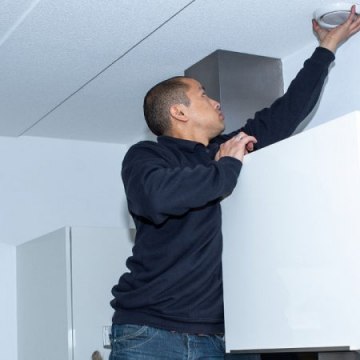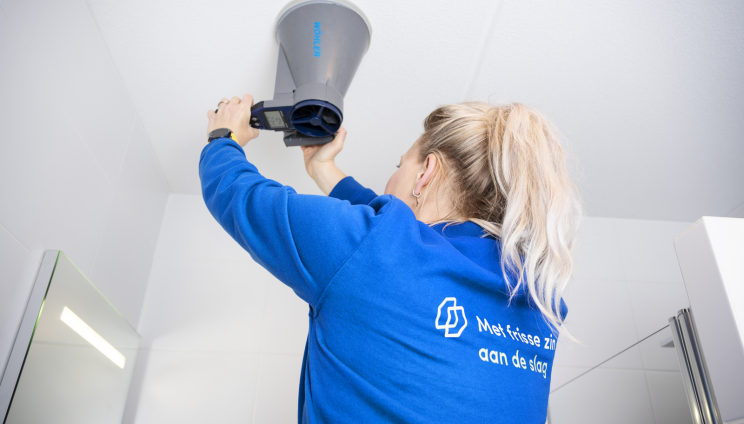

What is the best way to measure air quality? What can you do to improve air quality? Find out more in this blog.


Air quality is naturally good if we do not contribute to it. This means that we have control over the air quality in our homes. Thus, we can make sure that the air quality in our living environment is good.
In this blog we will show you how. We will tell you more about:
Poor air quality often results from a combination of different factors.
A few examples:
Poor air quality is usually the result of inadequate ventilation. Make no mistake: this can happen in any building. In older buildings without a ventilation system, and in new buildings where the system is incorrectly or inadequately set. So there is no need to stop cooking and using deodorant, as long as you ventilate properly.
Curious about your air quality? Find out how to measure air quality below.
There are various instruments on the market that can be used to measure air quality. These devices are available for both professional and private use.
For a thorough measurement, temperature, humidity and CO2 are the most important variables to measure. The following values are recommended:
For a more comprehensive measurement, you can also measure oxygen levels, particulate matter and other volatile substances (such as vapours from paints, detergents and fuels).
Adjusting the ventilation system
Depending on the outcome of the measurement, you can then adjust the ventilation system.
When the CO2 level is too high, start with extra ventilation in rooms where combustion takes place. Think about the kitchen (especially baking and frying), but also in the living room if you have a fireplace or wood-burning stove.
Is your humidity level too high? This is often the case because warm, damp air is trapped. This is especially the case in bathrooms and bedrooms, but also in rooms where the washing machine and tumble dryer are located. So pay particular attention to ventilation in these rooms.
In fact, no matter what value needs to be improved, more and better ventilation can significantly improve air quality.
Many scientific studies confirm the positive effects of good ventilation. Air quality and health go hand in hand.
Research shows that better air quality is directly linked to better fitness, improved productivity, increased resistance and a reduction in asthma and COPD symptoms.
How can you improve air quality? Here are some practical tips.
Want to know more about a healthy indoor environment? Or how to measure air quality? Then read our other blogs for even more information.
Do you still have questions about your ventilation after reading this blog? Then feel free to contact our customer service team. We will be happy to help you with anything related to ventilation and air quality.